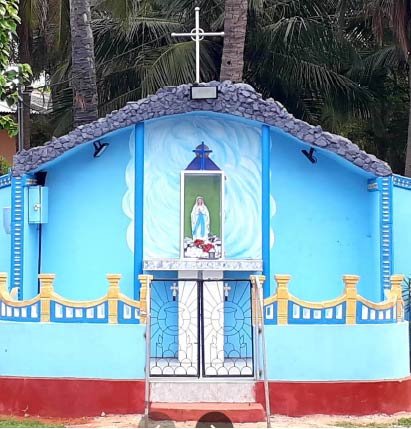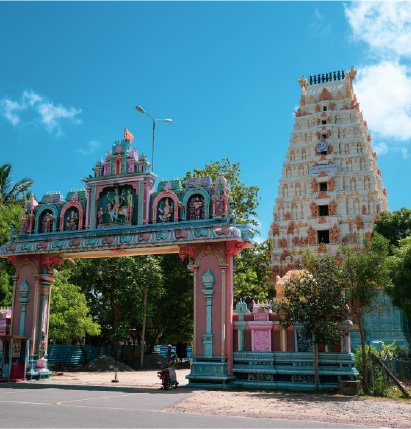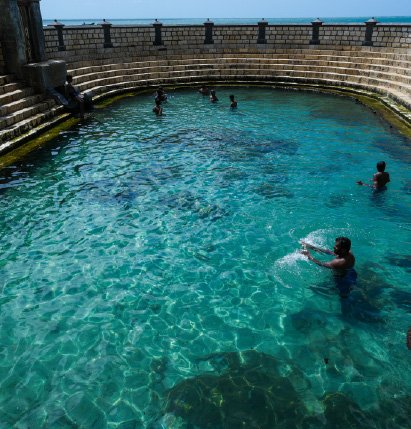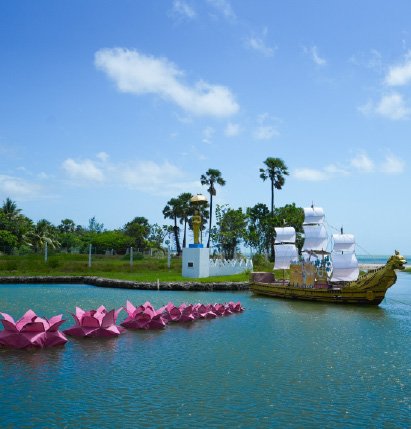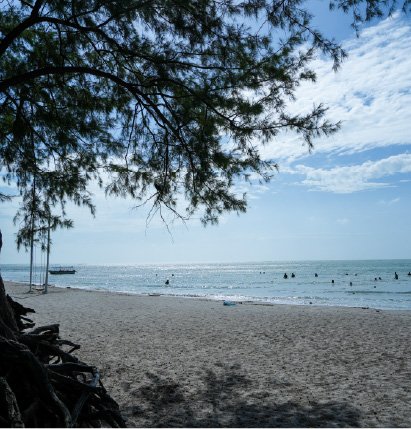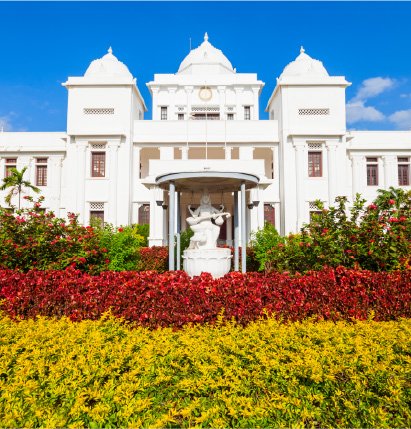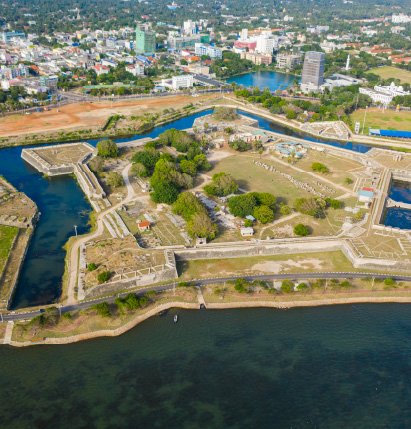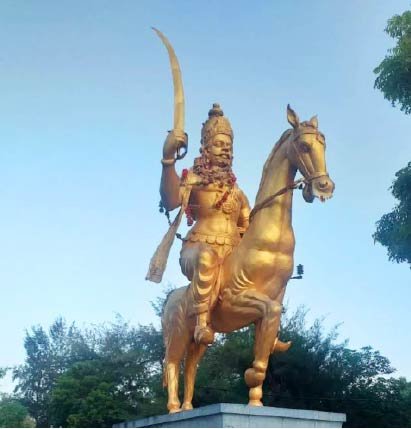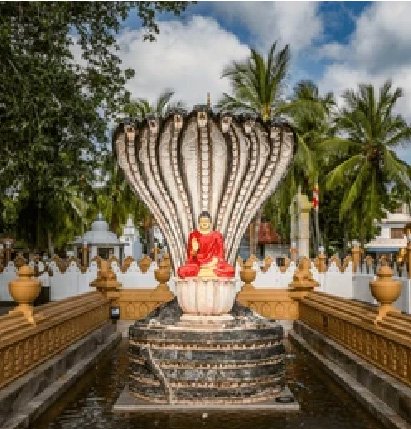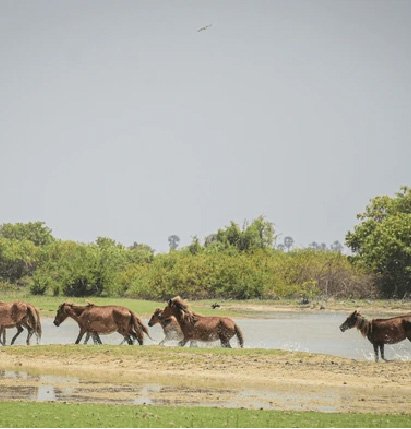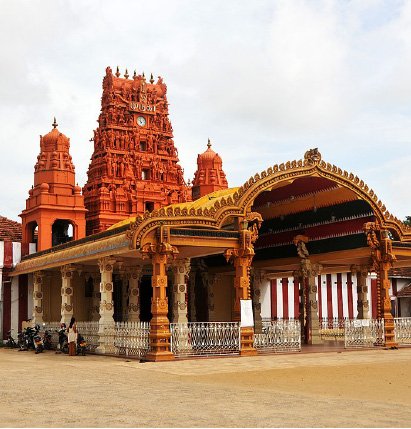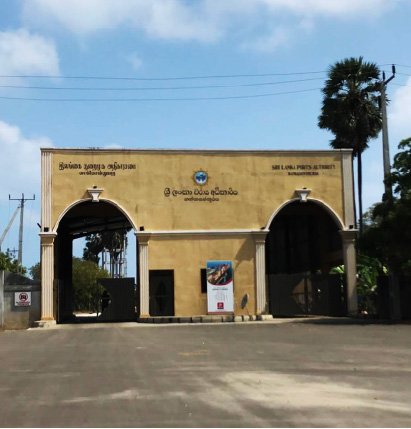NEARBY ATTRACTIONS
From time-honoured temples and healing springs to coral-stone forts and powder-white beaches, the Jaffna peninsula is a tapestry of history, faith, and unspoiled coastal beauty. Infenta’s Villa places you at the centre of it all—just minutes from legendary shrines, colonial landmarks, vibrant island markets, and serene stretches of sand. Whether your heart seeks pilgrimage, adventure, or simple seaside tranquillity, every road from our villa leads to a story waiting to be told and a memory ready to be made. Let this guide inspire your journey, then set out and let Jaffna unfold around you.
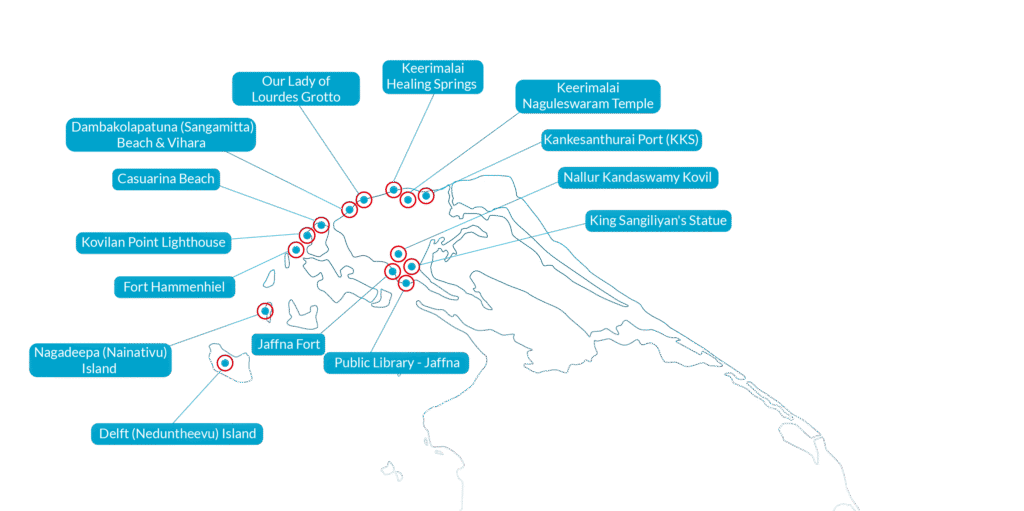
≈ 2 min by car / 5 min on foot
Sillalai is nick-named “Little Rome” for its 500-year Catholic heritage. A few hundred metres from the villa stands the modern stone grotto and chapel dedicated to Our Lady of Lourdes, rebuilt and blessed in 2018. Each 15 August the shrine draws thousands for the Feast of the Assumption, yet on ordinary days it remains a quiet place to light a candle and reflect beneath palmyrah palms.
≈ 15 min / 9 km
One of Sri Lanka’s five revered Pancha Ishwaram Shiva shrines, this sea-bluff temple is traced in legend to the 6th century BCE. Destroyed in the 17th century by Portuguese cannon fire, it was painstakingly rebuilt and finally re-consecrated in 2012. Pilgrims flock here on new-moon day (Aadi Amavasai) to offer milk, lamps and garlands beneath the towering gopuram, while sea breezes carry the scent of camphor and jasmine across sculpted sandstone pillars.
≈ 15 min / 50 m walk from the Kovil
A low wall is all that separates these freshwater pools from the Indian Ocean. Legends tell how the sage Nagula Muni—and later King Vijaya, Prince Rama and countless devotees—were cured of ailments after bathing here. Fed by underground limestone aquifers thought to connect to Nilavarai’s “bottomless well,” the springs remain a popular ritual bath, with separate open-air pools for men and women.
≈ 6 min / 3 km
At this quiet coconut-fringed inlet Theri Sangamitta landed in 249 BCE with a sapling of the sacred Sri Maha Bodhi. King Devanampiya Tissa built Samudda-Panasa Vihara to mark the event; the modern seaside temple keeps that early-Buddhist story alive, framed by turquoise water and fishing boats.
≈ 25 min / 16 km
Karainagar’s famous ribbon of powder-white sand takes its name from the whispering casuarina trees that fringe the shoreline. Shallow, glass-clear water stretches far offshore—ideal for safe swimming, snorkelling above small reef outcrops, or sunset strolls beneath soft pastels. Modest huts sell fresh coconuts, and fishermen will ferry you to deeper reefs if you ask. Widely rated the peninsula’s best beach.
≈ 30 min / 19 km
At the north-west tip of Karaitivu Island, this 30 m white masonry tower has flashed two white beams every ten seconds since 1916, guiding ships through the Palk Strait. Built on an earlier 1899 station, the light’s 31 m focal height gives a 20 km range. Limited access means you admire it from the beach, but the cape’s windswept coral flats and panoramic sea views make the detour worthwhile.
≈ 30 min / 20 km drive + 5 min navy boat
This hexagonal coral-stone sea fort was built by the Portuguese (1618), captured and expanded by the Dutch (1658), later a British high-security prison, WWII hospital and today a boutique hotel run by the Sri Lanka Navy. Visitors can explore dungeons, ramparts and panoramic lagoon views after the short launch ride from the causeway jetty.
≈ 25 min / 15 km
Opened in 1959 in graceful Indo-Saracenic style, the library once held 97,000 rare works before its tragic burning during the 31 May 1981 pogrom. Painstakingly rebuilt with island-wide donations and reopened in 2003, it now stands as a white-domed symbol of cultural resilience and welcomes readers to airy halls and peaceful gardens.
≈ 25 min / 15 km
The star-shaped bastion was begun by the Portuguese (1618-25), captured by the Dutch (1658) and later held by the British. Its granite ramparts, Dutch Governor’s House and Kruys Church bore the brunt of modern-era battles but are being restored; the walk around the walls offers sweeping lagoon vistas and a tangible chronicle of five centuries of conflict and trade.
≈ 27 min / 16 km
Unveiled in 1974 and refurbished in 2011, the gilded equestrian monument honours Cankili II, the last king of the Jaffna Kingdom (1617-19). Rising at a busy Nallur roundabout near the royal palace ruins, it is a proud emblem of Tamil sovereignty and a popular photo stop on any city tour.
≈ 40 min drive to Kurikadduwan Jetty + 20 min ferry
Revered by Buddhists as the site of the Buddha’s second visit—where he settled a dispute between Naga kings—the Nagadeepa Purana Vihara ranks among Sri Lanka’s 16 holiest shrines. A few hundred metres away stands the vivid Nagapooshani Amman Kovil, making this tiny isle a rare shared-faith pilgrimage.
≈ 45 min drive to Kurikadduwan + 1 hr ferry
A windswept coral island of wild ponies, baobab trees and Dutch-era ruins, Delft was a Portuguese horse station and later a Dutch outpost. Highlights include the coral-block pigeon loft, Queen’s Tower beacon and the crumbling limestone fort. Pack water and sun-protection—facilities are sparse but the sense of remoteness is unforgettable.
≈ 15 km / 25 min drive
Nallur Kandaswamy Kovil stands as the spiritual heart of Jaffna and one of Sri Lanka’s most revered Hindu temples. Dedicated to Lord Murugan, this vibrant Dravidian-style temple is renowned for its golden spires, grand gopurams, and rhythmic rituals that echo centuries of devotion. The temple hosts the iconic 25-day Nallur Festival each August, drawing thousands of pilgrims in a vivid celebration of faith and Tamil heritage.
≈ 18 km / 14 min drive
Located at the northern tip of Sri Lanka, Kankesanthurai (KKS) Port is a key maritime gateway to the Jaffna Peninsula. Once a vital trade and naval hub, the port has been revitalized for both commercial and passenger operations, enhancing regional connectivity. Surrounded by scenic coastlines and steeped in strategic importance, KKS offers travelers a blend of historical relevance and natural beauty.

